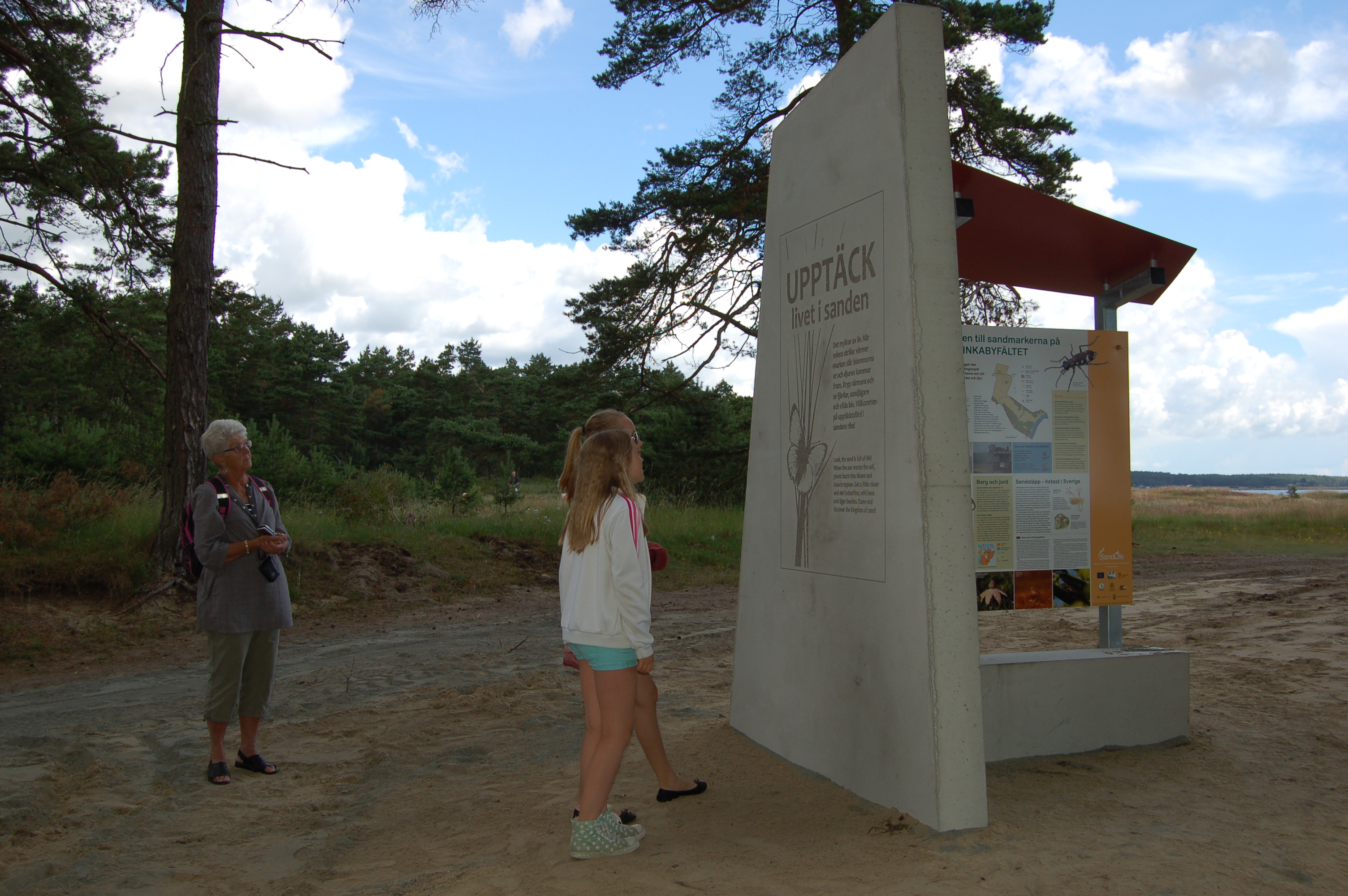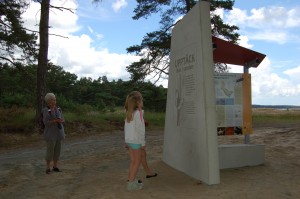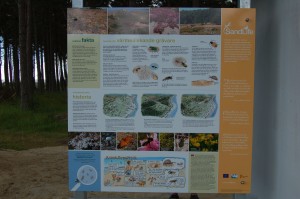The first outdoor museum in Sand Life was displayed for the public at Rinkaby firing range in Skåne at the 2nd of June 2014. The monument is build close to the flowering calcareous grasslands “sand steppe”, one of the most unique sandy soils in southern Sweden, and explains why the area is so special. Open Air Museum has three major components; they signal that life in the sand is extremely rich in species, they give us information on sandy soils and ultimately what is most exciting in that particular area.
-An Outdoor museum gives us information about what we see on the ground, says Karin Hernborg from Kristianstad Water Reserve that is responsible for the production of twelve outdoor museums in Sand Life. At Rinkaby firing range we learn why the military operation has been so important to the natural values of the field, the exciting discoveries that can be done on site and the endangered species that is so unique in the area. At Rinkaby you should try to find bugs in the dung, smell the fragrant pinks and listen to the wooded tree lark warbling ly-ly-lu-lu-lo in the air. -Our Outdoor museums are important tools in communicating why we need to restore sandy soils, says Gabrielle Rosquist project manager for the EU project Sand Life. Should we not lose the high number of threatened species and habitats that are available on the sandy soils, these must be opened up for animals, plants and fungi, as well as, becoming more accessible to us as visitors.
Anyone who does not get to Rinkaby firing range can look at a similar outdoor museum at Friseboda south of Ahus.


